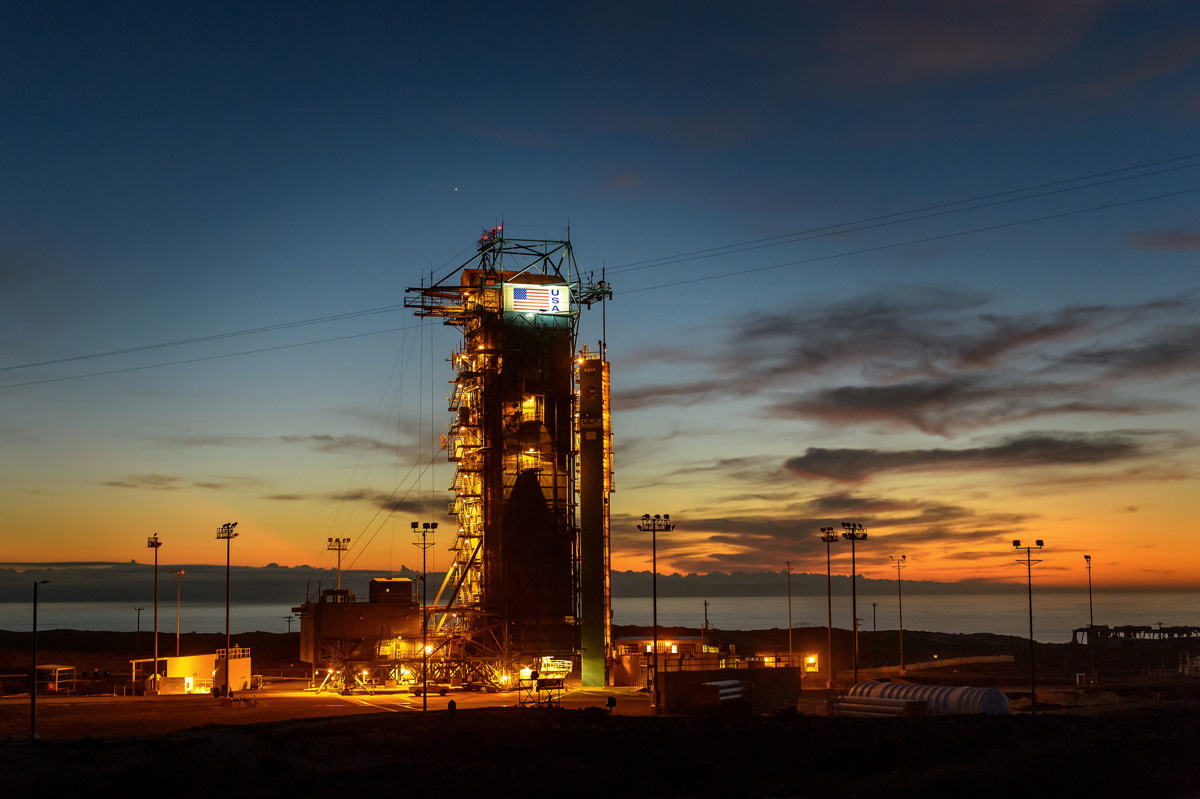NASA Launching New Earth-watching Satellite Today: Watch It Live

NASA is scheduled to launch its next Earth-observing satellite today (Jan. 29) from California, and you can watch the liftoff live online.
The agency's Soil Moisture Active Passive satellite (SMAP), designed to provide unprecedented data about Earth's soil moisture, is scheduled to launch from Vandenberg Air Force Base in California on Thursday (Jan. 29) at 9:20 a.m. EST (1420 GMT). A United Launch Alliance Delta II rocket will carry the probe to orbit. You can watch the SMAP launch live on Space.com starting at 7 a.m. EST (1200 GMT) Thursday via NASA TV. Officials are predicting an 80 percent chance of good weather for launch.
The SMAP satellite is heading to space in order to help scientists collect valuable data that could help officials better understand droughts and floods on Earth. SMAP will create a new global map of Earth's soil moisture about once every three days. [See images from the SMAP mission]

"With data from SMAP, scientists and decision makers around the world will be better equipped to understand how Earth works as a system and how soil moisture impacts a myriad of human activities, from floods and drought to weather and crop yield forecasts," Christine Bonniksen, SMAP program executive, said in a statement. "SMAP's global soil moisture measurements will provide a new capability to improve our understanding of Earth's climate."
SMAP comes equipped with a giant, rotating mesh antenna, and at nearly 20 feet (6 meters), it will be the biggest of its kind ever flown in space, according to NASA. The satellite will peer into the top 2 inches (5 centimeters) of Earth's soil to track its moisture, allowing forecasters to potentially get a better sense of areas at high risk for drought and flood.
"A flood follows a heavy rainfall — but only if the ground cannot soak up the rain. Waterlogged soil makes a region more flood-prone," NASA officials wrote in a news release. "Going to the opposite extreme, a drought can parch soil to such an extent that plants are unable to grow even after a few rains have fallen. Knowing soil moisture allows hydrologists to make better decisions related to the risk of flooding and drought, such as how much water to retain in reservoirs."
The Delta II rocket will also carry four small cubesat satellites to orbit with SMAP. The cubesats, created as part of NASA's Educational Launch of Satellites program, will explore a variety of science investigations. EXOCUBE and the two FIREBIRD (Focused Investigations of Relativistic Electron Burst Intensity, Range, and Dynamics) satellites will explore space weather, while GRIFEX is a technology demonstration.
Get the Space.com Newsletter
Breaking space news, the latest updates on rocket launches, skywatching events and more!
SMAP will orbit about 426 miles (685 kilometers) above Earth's surface, and is the fifth of five NASA Earth-observing satellite launches initially expected to take flight in 2014. NASA's Orbiting Carbon Observatory-2 satellite, Global Precipitation Measurement Core Observatory and ISS-RapidScat all got off the ground last year, with the agency's Cloud-Aerosol Transport mission flying to space earlier in 2015.
Follow Miriam Kramer @mirikramer. Follow us @Spacedotcom, Facebook and Google+. Original article on Space.com.
Join our Space Forums to keep talking space on the latest missions, night sky and more! And if you have a news tip, correction or comment, let us know at: community@space.com.

Miriam Kramer joined Space.com as a Staff Writer in December 2012. Since then, she has floated in weightlessness on a zero-gravity flight, felt the pull of 4-Gs in a trainer aircraft and watched rockets soar into space from Florida and Virginia. She also served as Space.com's lead space entertainment reporter, and enjoys all aspects of space news, astronomy and commercial spaceflight. Miriam has also presented space stories during live interviews with Fox News and other TV and radio outlets. She originally hails from Knoxville, Tennessee where she and her family would take trips to dark spots on the outskirts of town to watch meteor showers every year. She loves to travel and one day hopes to see the northern lights in person. Miriam is currently a space reporter with Axios, writing the Axios Space newsletter. You can follow Miriam on Twitter.









